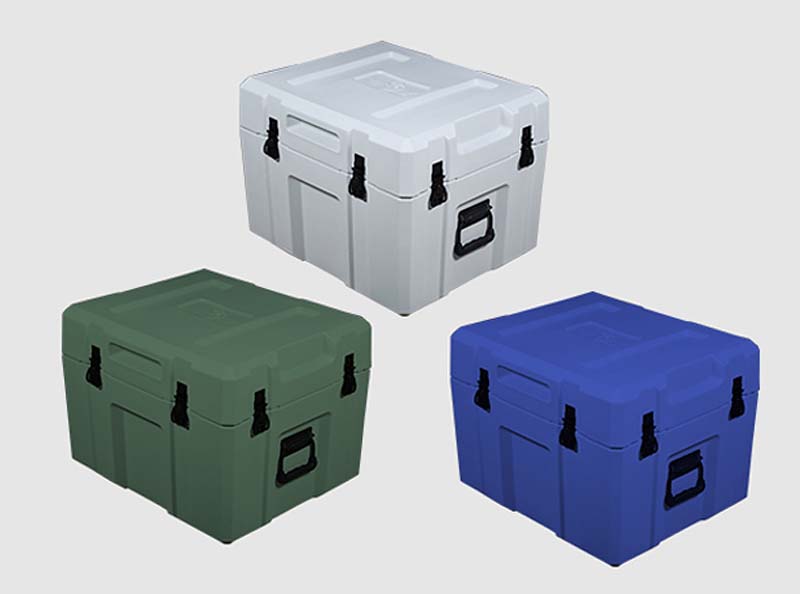What are the Factors Affecting Load-bearing Capacity of Rotomolded Products
 Jun 17,2024
Jun 17,2024

What are the Factors Affecting Load-bearing Capacity of Rotomolded Products?
The load-bearing capacity of rotomolded products is influenced by several factors, each playing a crucial role in determining the structural integrity and performance of the final product. Understanding these factors is essential for engineers and designers to optimize the rotational molding process and enhance the product’s load-bearing capabilities. Here are the key factors:
1. Material Selection
The type of polymer resin used in the rotational molding process significantly affects the load-bearing capacity of the final product. Different resins have varying mechanical properties, such as tensile strength, flexural strength, and impact resistance. For instance, high-density polyethylene (HDPE) and polypropylene (PP) are commonly used materials for rotational molding due to their excellent durability and strength. Rotomolded products made from these materials generally have higher load-bearing capacities compared to those made from lower-grade polymer resin.
2. Wall Thickness
The wall thickness of a rotomolded product directly impacts its load-bearing capacity. A thicker wall provides greater structural integrity and can support more weight, thereby increasing the load-bearing capacity. However, there’s a balance to be struck, as overly thick walls can increase weight and material cost without proportional gains in strength.
3. Design Geometry
The design geometry of a rotational molding product plays a crucial role in determining its load-bearing capacity. A product with a uniform load distribution and a symmetric design will generally have a higher load-bearing capacity. It is essential to avoid sharp corners, sudden changes in wall thickness, and voids in the design, as these factors can weaken the structure and reduce the load-bearing capacity.

4. Mold Design
The design of the mold influences the distribution of material and, consequently, the strength of the product. A well-designed mold ensures uniform wall thickness and reduces the likelihood of stress concentration points, which can lead to failure under load
5. Processing Parameters
The rotational speed, temperature, and cooling rate during the molding process can also affect the load-bearing capacity of the rotomolded product. Higher rotational speeds can result in better structural integrity and increased load-bearing capacity, while excessive temperatures can lead to material degradation, reducing the product's strength. Slow cooling can lead to larger, more ordered crystals, which generally result in higher tensile strength.
6. Additives and Reinforcements
The addition of fillers, such as glass beads or carbon fiber, can enhance the mechanical properties of the polymer, including its load-bearing capacity. These additives can improve strength, stiffness, and resistance to wear and tear.
7. Layering and Multilayer Construction
Some rotomolded products are made with multiple layers of different materials to combine the best properties of each. For example, a product might have an outer layer for UV resistance and an inner layer for increased strength.
8. Post-molding Treatments
Techniques such as annealing, which involves heating the product to a specific temperature and then slowly cooling it, can improve its molecular structure and mechanical properties, including load-bearing capacity.
9. Quality Control
Consistent quality control during the rotational molding process is essential to ensure that each product meets the required standards for load-bearing capacity. This includes monitoring the temperature, rotation speed, and cooling time, as well as conducting regular tests on the finished products.
The load-bearing capacity of rotomolded products is a critical factor that determines their suitability for various applications. By carefully considering and optimizing these factors, rotational molding manufacturers can produce rotomolded products with the necessary strength and durability to meet specific load-bearing requirements.
 Tel: 0086-13632687993
Tel: 0086-13632687993  Email: roto@lightvenus.com
Email: roto@lightvenus.com

 Home
Home What the Effective Ways to Evaluate the Load-bearing Capacity of Rotational Molding Products
What the Effective Ways to Evaluate the Load-bearing Capacity of Rotational Molding Products  You May Also Like
You May Also Like



 Tel
Tel
 Email
Email
 Address
Address








